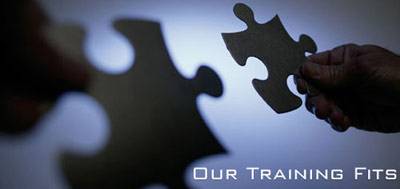Building stories and metaphor in business has proven power.
Research has even shown that stories naturally sneak into the unconscious mind, bypassing the conscious filters that stop direct suggestion being accepted unchecked.
There are known story telling methods used by Shakespeare, Disney, and many more of the great storytellers in history. Three such methods are
The monomyth or Hero’s Journey - Edward Taylor's observations of common patterns in plots of hero's journeys
- originally formulated by Emma Coats, one of Pixar’s Story Artist
— a dramatic structure that can be traced back to Aristotle. Sometimes referred to as ‘the five act formula’.
As long as communication has existed, we have communicated via stories – from pictures on cave walls to flat screen TV’s. People are attracted to stories because we are social creatures and we relate to other people through perceived shared experiences. Storytelling evokes a strong neurological response. Neuro-economist ’s research indicates that our brains produce the stress hormone cortisol during the tense moments in a story, which allows us to focus, while the cute factor of the animals releases oxytocin, the feel-good chemical that promotes connection and empathy. Other neurological research tells us that a happy ending to a story triggers the limbic system, our brain’s reward centre, to release dopamine, which makes us feel more hopeful and optimistic. Think of a film, or even advert, you enjoyed and consider the key story structure that hooked you; was it overcoming adversity or something similar?
Building stories in Business enables both staff and clients alike to emotionally connect to the message and buy into the values embedded in the message.
All Language is Metaphoric
In addition to this, our language is built on metaphor and is naturally symbolic
It is easy to appreciate how misunderstanding can occur and how this can develop into context-blindness as language by its nature is vague, open to interpretation and metaphoric. The following two quotes by key figures in this field express this more eloquently:
“A metaphor is understanding something in terms of something else”
George Lakoff
“Metaphor mediates the interface between the conscious and unconscious mind”
David Grove
From Shakespeare to Shelley and from advertisers to politicians, people across the world have leveraged the effects of metaphor to convey new ideas and concepts and to appeal to our emotions.
However, metaphors are not just, for when we are being creative. We use metaphors every day for communicating complex ideas. In fact, researchers estimate that we use, on average, six metaphors per minute in ordinary speech (Pollio, 1994). This is because metaphors underpin our thinking and rise to the surface in the words we use. Some are very obvious: I’m banging my head against a brick wall; there’s a big knot in my stomach; he’s burying his head in the sand. Others are embedded in our sentences and do not stand out as much: I’m building a new business; I am bottling up my feelings; I need to follow through on my tasks.
Metaphors have the power of enabling each individual to connect the metaphoric interpretation to each specific context in a way that best fits their map. But metaphors are a double-edged sword: when poorly wielded they have the potential to cause more harm, yet when wielded by a skilled hand, they cut to the heart of the matter. Framing correctly ensures the content and contexts can be connected appropriately.
Quick exercise – please reread the paragraph “Metaphors have the power…” and mark-out the metaphors. How many did you find? Did you get at least 10? There are more… or did you only really notice “double-edged sword”. You can run a simple test by asking “what kind of [??] is that [??]” where [??] is anything you may consider metaphoric eg “what kind of [map] is that [map]?”. And see where it leads you. Hey, “what kind of [leads] is that [leads]?”
If you are interested in understanding more about the power of language and how to build it to house your message successfully, please contact Mark Peters by email or on 0121 251 6172
Mark is the author of ‘the accidental hypnotist’

Click 'Buy now' button to order paperback or This email address is being protected from spambots. You need JavaScript enabled to view it. for pdf
Personal Development Day
 The overall aim of the personal development workshop is to build an awareness/understanding of the important of these key areas. The common thread can get overlooked when the sessions are taught as one day each so here is a chance to explore them at an accessible level.
The overall aim of the personal development workshop is to build an awareness/understanding of the important of these key areas. The common thread can get overlooked when the sessions are taught as one day each so here is a chance to explore them at an accessible level.
To keep believing you can adapt without the real need to deal with these areas can eventually lead to mental and physical illness. Remember "if you keep doing things the same way, you'll keep getting the same results". Now is the time to CHANGE....
Overcome old limiting beliefs...
Workshop content
TIME MANAGEMENT – Learn to work smarter, not just harder. Simple, effective tools to help you to understand and manage your time effectively
TEAM BUILDING – Whilst a team is a group of people, a group is not necessarily a team. Understanding roles, strengths, weaknesses, goal setting etc will help you create and be part of an effective team.
ANGER MANAGEMENT – Anger and rage are on the increase in all areas of public and private life causing ill-health. The best way to help yourself and others is to understand the causes, triggers and behaviour patterns of anger and to learn effective techniques for diffusing.
STRESS MANAGEMENT – One useful definition of stress is ‘stress is a demand made upon the adaptive capacities of your mind and body’. Learn to develop your stress barometer and effective simple methods of dealing with it.
Learning Outcomes
- You will be able to identify 'signs' and 'symptoms'.
- You will be able to identify factors that may cause these problems
- You will be able to change
Training & Development
We provide personal and corporate training via open and in-house courses. We can produce bespoke courses to suit your needs. Below are listed example courses / workshops that have proven very effective.
- Introduction to NLP
- NLP Practitioner - What is NLP?
- Effective coaching for leaders & managers
- Communication
- Stress Buster Day
- Customer relations for Managers and Leaders
- Peaceful Warrior - development of mind and body
- Train the Trainer
- Personal Development - time, team, anger and stress management
- NLP and Hypnosis for Sales People
- Learn Self Hypnosis in the West Midlands
- Mind Mapping
Sessions can be from 2 hours to 5 or 6 days dependent on your needs. We deliver on-site to suit you.
We work with you to build your business through development of staff potential.
Forthcoming open training courses: Click Here for open courses running in Birmingham
NLP coaching will help you and your clients move forwards in life, overcoming those old limiting beliefs and anxieties. Ideal for those wanting to add life coaching or NLP coaching to their skill set. Also ideal for manager wanting to coach and motivate their staff.
NLP- Neuro-Linguistic Programming (NLP) studies the structure of how humans think and experience the world. From this we can create the opportunity for change
 What is a sales trance? Learn to understand and identify natural trances within us all and how to use them to enable customers to see the true benefits of the purchase they are considering.
What is a sales trance? Learn to understand and identify natural trances within us all and how to use them to enable customers to see the true benefits of the purchase they are considering.
Learn to:
- Use embedded commands
- Pre-frame for success
- Identify and create natural trance states
- Ericksonian language patterns
- Rapport building (trust building)
- Overcome sales resistance
- Matching, pacing and leading
|
 |
Did you know that when you communicate only 7% of your message is contained in the words you use, 38% in the tone and style of your voice and 55% is contained in your physiology (your expressions, your eyes, whether you are flustered or calm etc). Some people refer to this as non-verbal communication. Although spoken communication is a direct way to convey a message, it can be masked. In your physiology the message can be conveyed in a truer sense or form.
Think about it for a second, have you ever asked someone to do something and they say "yes" but you can tell by the way they clench their teeth, and the expression on their face that they are not actually happy about doing it?
With this in mind, it is important to familiarise yourself with this art of non-verbal communication because it can support you in improving the way you communicate with others (I am of course pre-supposing that you want to improve the way you communicate!).
Keep in mind that interpretation of physiology has a high probability rate but it may not necessarily be definite. However with practice you can become a real expert at recognising certain traits in people and learning how to respond or communicate based upon them.
The map is not the territory
Our world is made up of a "map" that we have created ourselves based on a collection of past experiences, our attitudes and belief systems. Our tendency is to filter our experiences
based upon our perceptions and beliefs.
This of course will be different to another person's perceptions and beliefs. If you find it difficult to "step into their shoes" and see the world from their viewpoint then communication can become difficult and heated! Remember that because our map has been made up a certain way it does not mean that this is how the world is even though your belief system will tell you something different!
The meaning of the communication is the response you get
Some people struggle with this presupposition because it places the responsibility for communication squarely in their court, which of course it is! Communication is not about giving fifty-fifty. It is about giving 100% to a conversation from both communicators!
There is usually a desired outcome to communication whether it is to lead, encourage, delegate, request. If your desired outcome has not been met then chances are you may have not expressed yourself in such a way that it fits with the recipient's "map" or view
By taking 100% responsibility for communication within a conversation you are not "taking the blame" and it is not "your fault". This statement just means that the conversation ended badly and if you look to see what your part was in that then you will gather some great insights into future communications.
However, if your option is to "blame them" then nothing can be achieved
You cannot not communicate
Communication is so much more than just words and learning how to recognize and interpret the other forms of communication can provide you with a certain advantage, not necessarily so that you can use this against another, but so that you can use it to communicate effectively and honestly with them.
Mark Peters is a member of The International Association of Trainers in Aggression Management, a qualified NLP Master Practitioner (Society of NLP) and Clinical Hypnotherapist (GHR). He works with local companies and national organisations to facilitate change. the organisation also offers Stress Buster workshops, on-site massage, exercise classes and one-to-one sessions.
This one day workshop can be delivered at your venue for a maximum of 20 staff. Price for the day is
